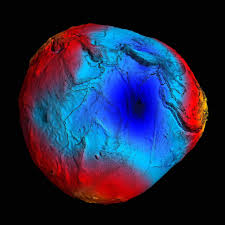New theoretical research explores innovative ways to detect primordial black holes, suggesting that the characteristics of these elusive objects could range from hollow planets in space to microscopic tunnels in earthly matter. The study highlights the minimal cost and significant potential of these methods in advancing our understanding of dark matter.
Primordial black holes
When you think of black hole formation, you might imagine a giant star exhausting its fuel and collapsing under its own gravity. However, the turbulent conditions of the early universe may have created many smaller black holes long before stars existed.
These “primordial black holes” have been the subject of scientific theory for decades. Some researchers suggest they may even be responsible for dark matter — the mysterious, invisible substance that makes up 85% of the universe’s mass.
Despite these theories, no primordial black holes have ever been directly detected.
Exploring the unknown: Ways to detect
Now, a new study co-led by researchers at the University at Buffalo takes a creative approach to the search. The study proposes looking for evidence of these black holes at two different scales: hollow planets in space and tiny microscopic tunnels in everyday materials on Earth such as rocks, metals and glass.
Set to be published in the December issue of MIT and now available online, the theoretical study posits that a primordial black hole trapped within a large rocky object in the universe would eat up its liquid core and hollow it out. Alternatively, a speeding primordial black hole could leave behind straight tunnels large enough to be visible with a microscope when it passed through solid matter, including matter on Earth.
“The probability of finding these signals is low, but it wouldn’t require a lot of resources to find them, and the potential payoff, the first evidence of primordial black holes, would be huge,” says Dejan Stojkovic, PhD, a professor of physics in the UB College of Arts and Sciences and co-author of the study.
“We have to think outside the box because everything that’s been done before to find primordial black holes hasn’t worked.” Investigating cosmic and earthly signals The study calculated how big a hollow planet could be without collapsing in on itself, and how likely it is for a primordial black hole to pass by an object on Earth. (If you’re worried about a primordial black hole passing through you, don’t worry. The study concluded that it wouldn’t be fatal.)
“Because of these long odds, we focused on solid traces that have existed for thousands, millions, and even billions of years,” says co-author De-Chang Dai, PhD, of National Dong Hwa University and Case Western Reserve University.
Stojkovic’s work was supported by the National Science Foundation, while Dai’s work was supported by the National Science and Technology Council (Taiwan).
Hollow objects cannot be larger than 1/10 the mass of Earth
As the universe expanded rapidly after the Big Bang, regions of space could become denser than their surroundings, causing them to collapse and form primordial black holes (PBHs).
PBHs would have much less mass than stellar black holes created later by dying stars, but they would still be extremely dense, like the mass of a mountain compressed into an area the size of an atom.
Stojkovic, who previously proposed finding theoretical wormholes, wondered if a PBH had ever become trapped within a planet, moon, or asteroid, either during or after its formation.
“If the object has a liquid central core, a captured PBH could absorb the liquid core, which has a density higher than the density of the outer solid layer,” Stojkovic says.
If the object collides with an asteroid, the PBH could escape the object, leaving nothing but a hollow shell.
But would such a shell be strong enough to support itself, or would it simply collapse under its own stress? Comparing the strength of natural materials such as granite and iron to surface tension and surface density, the researchers calculated that such a hollow object could be no more than a tenth of Earth’s radius, making it more likely to be a small planet than a normal planet.
“If it’s larger than that, it will collapse,” Stojkovic says.
These hollow objects can be detected with telescopes. The mass, and therefore the density, can be determined by studying an object’s orbit.
“If the density of the object is very low for its size, that’s a good indication that it’s hollow,” Stojkovic says.
Everyday objects could be black hole detectors
The study proposes that for objects without a liquid core, PBHs could easily pass through and leave a straight tunnel. For example, a PBH with a mass of 1022 grams — that’s 10 with 22 zeros — would leave a tunnel 0.1 microns thick.
